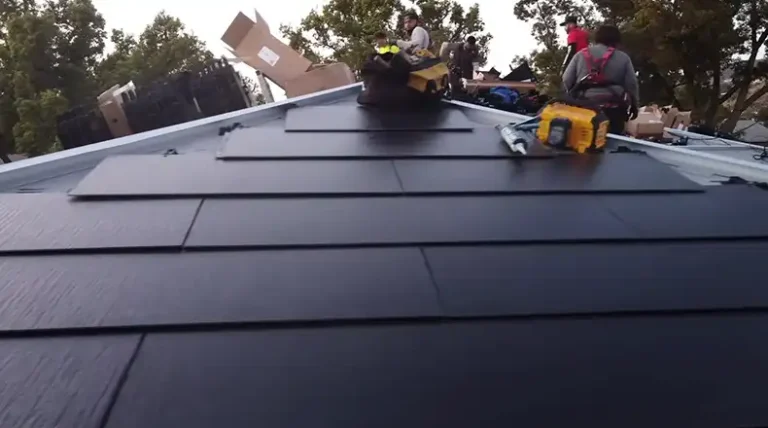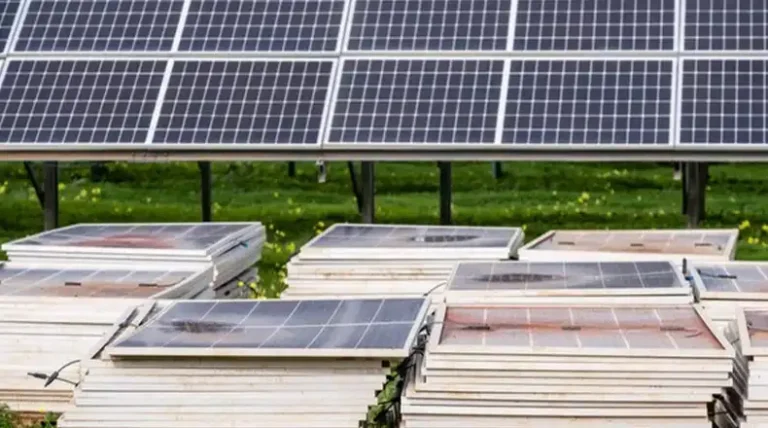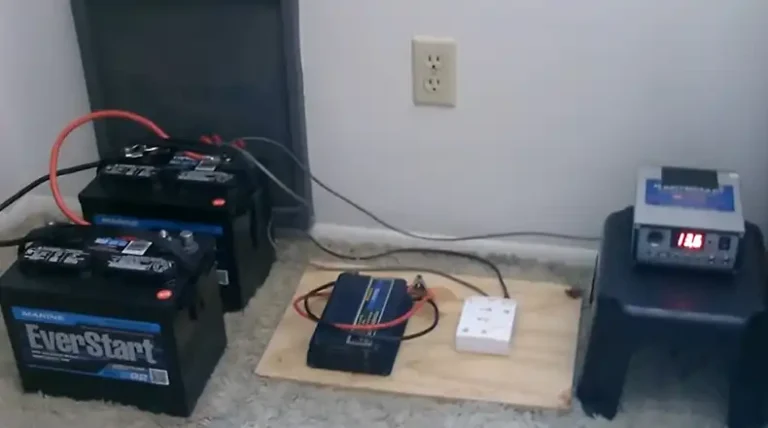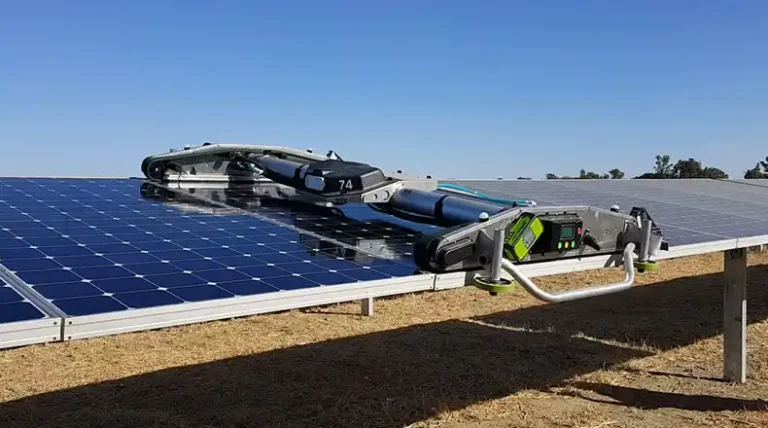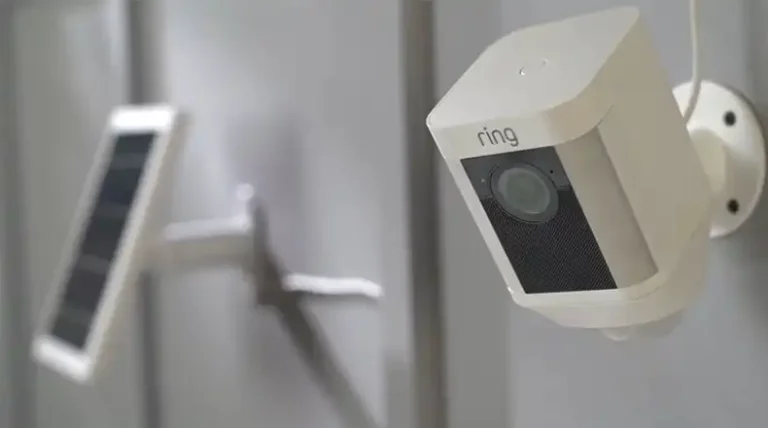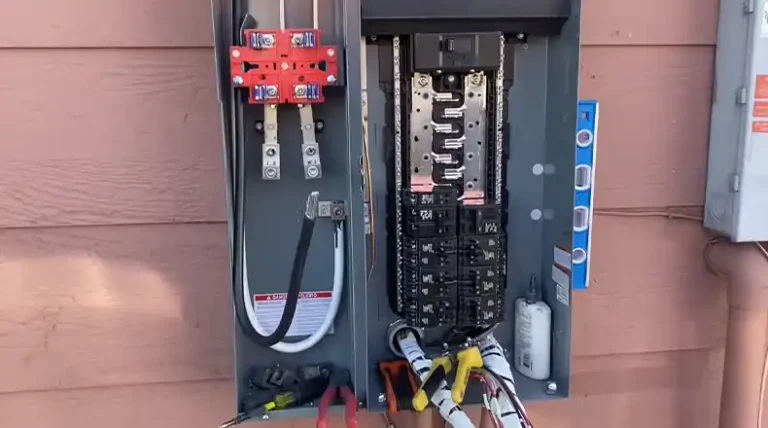Tools for Cleaning Solar Panels | The Ultimate Guide
For harnessing solar energy efficiently, maintaining clean solar panels is paramount. Neglecting this crucial aspect can lead to a significant drop in efficiency, costing you both in energy production and potential repairs.
The basic tools are brush, water and detergent. However, there are more tools so lets get into the details.
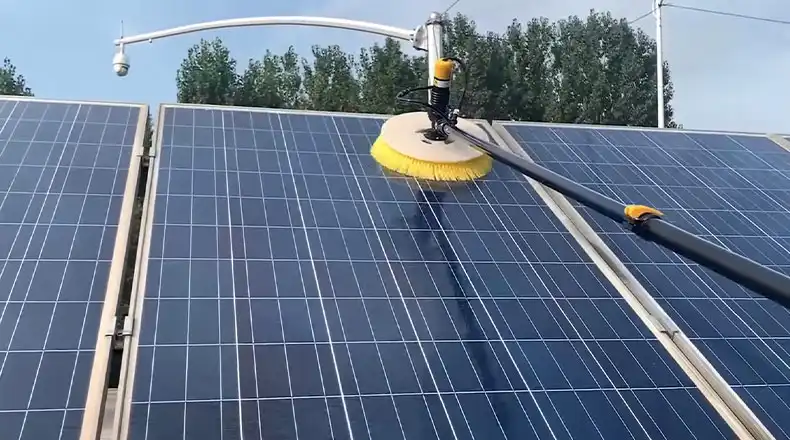
Basic Cleaning Tools To Use
Maintaining the efficiency of your solar panels is crucial for optimal energy production. To achieve this, having the right cleaning tools is paramount. Let’s explore the basic cleaning tools that every solar panel owner should have in their arsenal.
Soft-Bristled Brush
The soft-bristled brush is your first line of defense against accumulated dust and debris on your solar panels. Its gentle bristles effectively remove loose materials without scratching or damaging the panel surface. This tool is a simple yet indispensable part of your cleaning toolkit.
Regularly using a soft-bristled brush ensures that your solar panels stay free from dirt, allowing them to absorb sunlight efficiently. Consider it as a gentle massage for your solar panels, keeping them in top-notch condition.
Pro Tip: Choose a brush with bristles specifically designed for solar panels to ensure optimal cleaning without causing any harm.
Hose or Water Source
Water is a universal solvent, and when it comes to solar panel cleaning, having a reliable hose or water source is essential. This tool aids in rinsing off loosened dirt and maintaining a steady flow of water during the cleaning process.
Before starting the cleaning procedure, ensure that you have easy access to water. Whether it’s a hose or another water supply method, having a sufficient amount available ensures a thorough rinse, leaving your solar panels spotless and ready to absorb sunlight effectively.
Pro Tip: Use a hose with an adjustable nozzle to control water pressure, preventing any potential damage to the panels.
Mild Detergent
Sometimes, water alone might not be sufficient to tackle stubborn stains or accumulated grime on your solar panels. That’s where a mild detergent comes into play. Opt for eco-friendly or non-abrasive cleaning solutions to maintain the integrity of your panels.
Mix the mild detergent with water to create a gentle cleaning solution. This ensures a deep cleanse without harming the surface of the solar panels. Using a mild detergent is a safe and effective way to enhance the cleanliness and efficiency of your solar energy system.
Pro Tip: Check with your solar panel manufacturer for recommended cleaning solutions to avoid any adverse effects on the panels.
Specialized Cleaning Tools To Use
Solar panels, the silent heroes powering our homes with clean energy, demand meticulous care to ensure they operate at peak efficiency. In this section, we explore two innovative solutions designed to make solar panel cleaning a breeze – Solar Panel Cleaning Kits and Automated Cleaning Robots.
Solar Panel Cleaning Kits
Solar Panel Cleaning Kits are the Swiss Army knives of solar maintenance, bundling essential tools to keep your panels gleaming. These kits typically include:
- Soft-Bristled Brushes: Gentle yet effective, these brushes ensure thorough cleaning without causing scratches or damage to the delicate panel surface.
- Cleaning Solution: Specially formulated cleaning solutions, often eco-friendly, to dissolve stubborn grime and leave your panels crystal clear.
- Extendable Poles: Reach new heights effortlessly with extendable poles, allowing you to access every nook and cranny of your solar array.
- Squeegees: Perfect for removing excess water, squeegees leave your panels streak-free, maximizing their ability to absorb sunlight.
Using a Solar Panel Cleaning Kit is like giving your solar panels a spa day – pampering them to ensure they perform their best.
Automated Cleaning Robots
Imagine a Roomba for your solar panels – that’s the beauty of Automated Cleaning Robots. These high-tech marvels take the hassle out of maintenance with features such as:
- Precision Navigation: These robots are equipped with advanced sensors, ensuring they navigate your solar array with pinpoint accuracy, leaving no panel untouched.
- Soft Cleaning Brushes: Just like a gentle touch, the robotic cleaning brushes sweep away dirt without causing any harm to the solar panel’s surface.
- Water-Efficient Design: Minimizing water usage, these robots optimize the cleaning process, proving that sustainability and efficiency can go hand in hand.
- Scheduled Cleaning: Set it and forget it – many automated cleaning robots allow you to schedule routine cleaning sessions, ensuring your solar panels stay pristine without any effort on your part.
Investing in an Automated Cleaning Robot is like having a diligent assistant dedicated to maintaining your solar panels, ensuring they shine brightly year-round.
Manual Cleaning Step-by-Step Techniques
Maintaining the efficiency of your solar panels requires more than just the right tools – it demands a strategic and thorough cleaning approach. In this section, we’ll explore step-by-step techniques for manually cleaning your solar panels to ensure optimal performance and longevity.
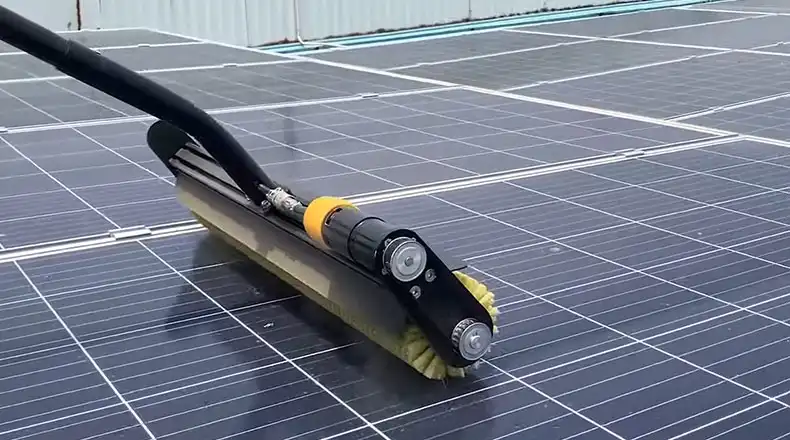
1. Preliminary Inspection
Before diving into the cleaning process, conduct a careful visual inspection of your solar panels. Look for any visible damage, cracks, or irregularities. This step is crucial to identify potential issues that may require specialized attention.
Insight: Imagine this as giving your solar panels a health check-up. Just like we visit the doctor for a thorough examination, your solar panels need a close inspection to ensure they’re in top shape.
2. Dry Brushing
Armed with a soft-bristled brush, gently remove loose materials from the surface of your solar panels. This step sets the stage for a more in-depth cleaning. Take your time and pay attention to every inch, ensuring all debris is effectively brushed away.
Insight: Think of dry brushing as sweeping away the dust bunnies from a neglected corner. It’s the initial sweep that paves the way for a cleaner, more inviting space.
3. Wet Cleaning
Now, it’s time to introduce a mild detergent or a non-abrasive cleaner. Using a soft sponge or cloth, apply the cleaning solution to the solar panels. Work in small, circular motions, focusing on areas with stubborn stains or accumulated grime.
Insight: Picture this step as giving your solar panels a spa treatment. The gentle application of a cleansing solution is like a soothing massage, removing impurities and revitalizing the surface.
4. Rinsing and Drying
Once the cleaning solution has done its job, it’s time to rinse off the panels with clean water. Use a hose or a bucket of water to ensure thorough rinsing. After rinsing, grab a squeegee to remove excess water and speed up the drying process.
Insight: Consider the rinsing and drying stage as giving your solar panels a refreshing shower. It’s the final touch to cleanse and rejuvenate, leaving them ready to bask in the sunlight.
5. Use a Lint-Free Cloth for Panel Edges
Solar panel edges are sensitive, and cleaning streaks can be a common issue. To address this, use a lint-free cloth to gently dry the edges and eliminate any streaks left by the cleaning process.
Insight: Treating the edges with a lint-free cloth is like ensuring your solar panels are dressed in their finest attire, free from any lingering marks or imperfections.
HOW TO CLEAN SOLAR PANELS
What Are The DIY Solar Panel Cleaning Solutions
Solar panels, the silent workhorses of sustainable energy, thrive when bathed in sunlight. However, their efficiency can be compromised if dirt and debris settle on their surfaces.
Fear not, as we unravel the simplicity and effectiveness of DIY solar panel cleaning solutions that you can concoct with items readily available in your kitchen.
Vinegar and Water Mix
Vinegar, the kitchen superhero, steps into the world of solar panel maintenance with prowess. Create a simple mixture by combining equal parts of distilled white vinegar and water. This acidic blend is gentle yet potent enough to break down grime and residues that accumulate on solar panels.
The acetic acid in vinegar acts as a natural solvent, dissolving mineral deposits and stubborn stains without leaving harmful residues. This concoction not only cleans but also leaves your solar panels streak-free, allowing them to absorb sunlight more efficiently.
Application Technique
Apply the vinegar and water mix using a soft cloth or sponge. Gently wipe the surface of the solar panels, paying attention to areas with visible dirt or stains. Rinse thoroughly with clean water to remove any lingering vinegar scent.
This DIY solution is cost-effective, environmentally friendly, and can be your go-to formula for regular solar panel maintenance.
Lemon Juice Solution
Lemons, besides being a zesty addition to your kitchen, bring their cleaning prowess to the solar panel maintenance arena. The natural acidity of lemon juice makes it an effective cleaner, ideal for dissolving grime and restoring the luster to your solar panels.
To create the lemon juice solution, squeeze fresh lemons and mix the juice with water. The result is a refreshing blend that not only cleans but also adds a citrusy fragrance to your solar panels. Lemon juice is particularly beneficial for cutting through greasy residues, making it a valuable ally in your DIY cleaning arsenal.
Application Technique
Use a soft cloth or sponge to apply the lemon juice solution evenly across the surface of the solar panels. Allow the solution to sit for a few minutes, letting the acidity work its magic. Follow up with a thorough rinse using clean water.
This simple yet effective solution not only cleans your panels but also leaves behind a hint of lemony freshness.
Baking Soda Paste
Baking soda, known for its versatility, steps into the limelight as a gentle yet effective abrasive agent for cleaning solar panels. When combined with water, it forms a paste that can tackle stubborn dirt and stains without scratching the delicate surface of the panels.
The mild abrasive nature of baking soda makes it suitable for removing grime without causing damage. Additionally, baking soda has natural deodorizing properties, ensuring that your solar panels not only shine but also remain free from unpleasant odors.
Application Technique
Create a paste by mixing baking soda with water until it reaches a spreadable consistency. Apply the paste to areas with tough stains or accumulated dirt, using a soft brush or cloth. Gently scrub the surface, paying attention to detail.
Rinse thoroughly with water to reveal solar panels that gleam with renewed brilliance. The baking soda paste is a cost-effective and eco-friendly solution that proves effective against persistent stains.
Taking Help From Commercial Cleaning Services
Solar panels play a crucial role in harnessing clean energy, but their efficiency relies on proper maintenance. While some may opt for a DIY approach, enlisting the help of commercial cleaning services comes with numerous benefits.
Professional Cleaning Benefits
Investing in professional cleaning services for your solar panels offers a range of advantages. Firstly, these experts bring a wealth of experience and knowledge, ensuring a meticulous and effective cleaning process.
They understand the intricacies of solar panel materials and the potential risks associated with various cleaning methods.
In addition to expertise, commercial cleaning services come equipped with specialized tools and cleaning solutions specifically designed for solar panels.
This ensures a thorough cleaning without compromising the integrity of the panels. Professionals also adhere to safety standards, utilizing appropriate gear and techniques to prevent accidents or damage.
Moreover, opting for commercial cleaning services saves you valuable time and effort. Cleaning solar panels can be a meticulous task, and professionals efficiently handle this responsibility, allowing you to focus on other aspects of your life or business.
Choosing the Right Cleaning Service
When selecting a commercial cleaning service for your solar panels, it’s essential to consider a few key factors. Reputation and reviews play a pivotal role in assessing the reliability and quality of service. Look for companies with a track record of satisfied customers and positive testimonials.
Cost is another crucial aspect. While it’s tempting to opt for the cheapest service, it’s important to strike a balance between affordability and quality. Consider obtaining quotes from multiple services to make an informed decision.
Additionally, inquire about the cleaning methods and equipment they use. Ensure that the cleaning products are safe for your specific type of solar panels, avoiding potential damage or voiding warranties.
Customer service is often underestimated but can be a deciding factor. A responsive and communicative cleaning service ensures that your concerns are addressed promptly, creating a positive and efficient working relationship.
What Makes a Solar Panel Dirty
Solar panels, the unsung heroes of renewable energy, silently convert sunlight into power, but they’re not immune to the elements. Understanding what makes them dirty is crucial for effective maintenance.
Solar panels face a barrage of elements daily, from dust and dirt to bird droppings and tree sap. Imagine your car after a cross-country road trip—it accumulates grime. Similarly, solar panels are exposed to the outdoor elements, leading to a gradual buildup of various substances.
Dust and dirt settle on solar panels, forming a thin layer that hampers their ability to absorb sunlight. This layer, though seemingly insignificant, can significantly reduce the efficiency of the panels over time.
Bird droppings, while unpleasant to think about, are a reality for solar panels. These unsightly deposits not only obstruct sunlight but can also corrode the surface of the panels if left unaddressed.
Tree sap and pollen, innocent as they may seem, pose additional challenges. Their sticky nature allows them to adhere stubbornly to the panel’s surface, creating a barrier between the sunlight and the photovoltaic cells.
In essence, what makes a solar panel dirty is a combination of these elements conspiring to diminish its efficiency. The accumulation of dirt and debris acts as a silent saboteur, gradually robbing the panels of their ability to harness sunlight effectively.
To put it simply, a dirty solar panel is like a window with smudges—it doesn’t let the light in as it should. Regular cleaning is the key to ensuring your solar panels operate at peak performance, harnessing maximum sunlight to power your home.
It’s a small yet significant step in the journey towards a sustainable and efficient energy future
What Should Be The Frequency of Cleaning
Maintaining a regular cleaning schedule is pivotal to ensuring the optimal performance and longevity of your solar panels. The frequency of cleaning depends on various factors, and understanding these can help you make informed decisions for the upkeep of your solar energy system.
Factors Influencing Cleaning Frequency
The environmental conditions in your area play a significant role in determining how often you should clean your solar panels. Here are key factors to consider:
1. Climate Conditions
In regions with high levels of dust, pollen, or frequent rain, solar panels may require more frequent cleaning. Dust and debris can accumulate quickly, impacting the efficiency of the panels.
If you live in a dry and dusty climate, where particles settle on surfaces like an uninvited guest, it’s advisable to schedule more frequent cleaning sessions to ensure your solar panels are consistently soaking up the sun.
2. Surrounding Environment
If your solar panels are surrounded by trees or are close to industrial areas, they may be more prone to bird droppings, tree sap, or pollutants. In such cases, a more frequent cleaning routine becomes essential.
The surroundings matter – trees, birds, or industrial activities can add layers of grime, making it crucial to adjust your cleaning frequency accordingly.
3. Geographical Location
Geographical factors such as altitude and proximity to the equator also play a role. Areas with high humidity might experience faster buildup due to the potential for mold or algae growth on the panels.
If you find yourself basking in the warmth of a tropical paradise, the combination of humidity and sunlight might invite unwanted guests like algae, necessitating a more vigilant cleaning approach.
General Cleaning Guidelines
Establishing a baseline cleaning frequency can provide a starting point for your maintenance routine. Consider the following general guidelines:
However, it’s imperative to monitor the condition of your solar panels and adjust the frequency based on visual inspections and changes in environmental factors.
The Impact of Infrequent Cleaning
Neglecting regular cleaning can have tangible consequences. Even a seemingly thin layer of dust can compromise the efficiency of solar panels, leading to reduced energy production.
Over time, this decrease in efficiency not only translates into lower energy output but may also necessitate more intensive cleaning sessions to remove stubborn debris that has accumulated over extended periods.
DIY Frequency Assessment
Observing the condition of your solar panels is an excellent DIY method to determine if they need cleaning. Look for visible signs of dirt, bird droppings, or any other debris on the surface.
Regularly inspecting your solar panels allows you to spot potential issues early, helping you address them before they escalate into more significant problems.
Essential Safety Precautions To Take
Maintaining the cleanliness of your solar panels is crucial for optimal performance, but safety should always come first. Before embarking on any cleaning endeavor, it’s vital to adhere to essential safety precautions to ensure both your well-being and the integrity of your solar panel system.
Importance of Safety Measures
When it comes to cleaning solar panels, safety is not an option—it’s a necessity. The elevated positions of solar panels and the involvement of water and cleaning tools pose potential risks that demand careful consideration.
Solar panel cleaning often requires access to rooftops or high locations, necessitating the use of ladders or harness systems. Even ground-mounted systems may require elevated platforms, emphasizing the importance of sturdy equipment and proper usage.
Recommended Safety Gear
To mitigate risks during the cleaning process, investing in the right safety gear is non-negotiable. Here are the fundamental items you should have:
1. Safety Glasses
Shielding your eyes from debris and cleaning solutions is imperative. Safety glasses offer the necessary protection, ensuring your eyes are safe from potential splashes or accidental contact with cleaning agents.
2. Gloves
Cleaning agents, even mild ones, can irritate the skin. Wearing gloves not only protects your hands but also ensures a comfortable and safe cleaning experience.
3. Non-Slip Footwear
Whether you’re on a rooftop or the ground, non-slip footwear is essential. This reduces the risk of accidents, especially when moving on wet or soapy surfaces.
Powering Down the Solar System
Before starting the cleaning process, it’s crucial to power down your solar system. This step is not just a suggestion; it’s a safety imperative. Failing to do so not only puts you at risk of electrocution but also poses the threat of irreparable damage to your solar panels.
Powering down the system ensures that there is no electrical current running through the panels during the cleaning process, safeguarding both you and your equipment.
Inspecting Solar Panels
Before you commence cleaning, take a moment to inspect your solar panels. Look for any signs of damage, cracks, or irregularities on the surface. Additionally, check the connections to ensure they are snug and free of faults.
Addressing any issues discovered during this inspection is crucial for the long-term health of your solar panel system. If you identify electrical repairs are needed, it’s best to contact your solar installers or qualified solar electricians promptly.
Exercise Caution During Cleaning
Even with the right safety gear, exercising caution during the cleaning process is essential. If you’re using an extension pole or any equipment with handles, be mindful not to knock them into the solar panels, as the handles can cause scratches.
If you opt for a garden hose, avoid using excessively high pressure settings. High-pressure water can force its way into seals, potentially causing damage. A careful and measured approach ensures effective cleaning without compromising the structural integrity of your solar panels.
Cleaning Snow Off Solar Panels
For those in snowy climates, removing snow from solar panels is crucial for maintaining efficiency. Rather than using brute force, circulate warm indoor air through the panels to facilitate snow removal.
If this method proves ineffective, consider investing in a snow rake designed for the gentle removal of snow from solar panels.
How Can I Monitor My Solar Panel Performance
In the ever-evolving landscape of solar energy, keeping a close eye on your solar panel performance is crucial to ensuring optimal efficiency and longevity. In this guide, we explore the use of monitoring software and how to interpret the data it provides.
Using Monitoring Software
To truly understand how well your solar panels are performing, investing in monitoring software is a game-changer. These tools offer real-time insights into your system’s output, giving you a proactive approach to maintenance and performance optimization.
Monitoring software acts as the eyes and ears of your solar panel system. It tracks key metrics such as energy production, voltage, and current. With user-friendly interfaces, these programs make it easy for even non-tech-savvy individuals to grasp the nuances of solar energy analytics.
By using monitoring software, you gain:
- Real-Time Visibility: Instant access to how much energy your solar panels are generating at any given moment.
- Issue Detection: Prompt identification of any anomalies or issues within your solar system, allowing for swift intervention.
- Performance Trends: Historical data showcasing patterns and trends, aiding in long-term performance assessment.
- Remote Monitoring: Keep tabs on your solar panels from anywhere, enhancing convenience and efficiency in system management.
Interpreting Performance Data
Investing in monitoring software is only half the battle; understanding the data it presents is equally important. Here’s a breakdown of key elements to interpret:
Energy Production Metrics:
- Look for consistency in energy production. Slight fluctuations are normal, but significant drops may signal issues.
- Assess peak production times to align energy-intensive activities with optimal solar output.
Voltage and Current Readings:
- Stable voltage and current indicate a well-functioning system. Drastic changes may point to electrical issues.
- Cross-reference with manufacturer specifications to ensure readings align with expected values.
Historical Performance:
- Examine trends over weeks, months, and seasons. Seasonal variations are normal but sudden declines may warrant investigation.
- Identify any correlations between external factors (e.g., weather changes) and performance shifts.
Alerts and Notifications:
- Leverage software-generated alerts. These notifications can highlight potential problems before they escalate.
- Regularly check and respond to alerts to maintain system health.
Comparative Analysis:
- Compare current performance with the system’s initial benchmarks. Deviations may indicate the need for maintenance or upgrades.
- Evaluate performance against similar systems in your region to gauge competitiveness.
By interpreting performance data effectively, you empower yourself to make informed decisions regarding your solar panel system. It’s not just about generating electricity; it’s about optimizing the process for maximum efficiency and cost-effectiveness.
FAQs
Q1: Why is monitoring solar panel performance important?
A1: Monitoring solar panel performance provides real-time insights into energy production, helping detect issues promptly, optimize efficiency, and ensure the longevity of your solar system.
Q2: What metrics does monitoring software track?
A2: Monitoring software tracks key metrics such as energy production, voltage, current, and historical performance trends. It offers a comprehensive overview of your solar panel system’s health.
Q3: Can I monitor my solar panels remotely?
A3: Yes, most monitoring software allows remote access, providing the convenience of checking your solar panel performance from anywhere with an internet connection.
Q4: How often should I check the monitoring data?
A4: Regular checks are advisable, but the frequency may vary. Aim for monthly reviews, with more frequent checks during significant weather changes or if you receive system alerts.
Q5: What should I do if I notice a drop in energy production?
A5: Investigate the potential causes. It could be a minor issue like shading or a more significant problem requiring professional attention. Addressing concerns promptly ensures optimal system performance.
Q6: Are there alerts for system issues?
A6: Yes, monitoring software often generates alerts for issues like performance drops, electrical irregularities, or maintenance reminders. Regularly checking and responding to alerts is crucial.
Q7: Can I compare my system’s performance with others?
A7: Yes, comparative analysis is valuable. Monitoring software may allow you to benchmark your system against similar setups, helping you gauge competitiveness and identify areas for improvement.
Q8: Do I need technical expertise to interpret the data?
A8: While a basic understanding of solar energy concepts is helpful, most monitoring software is designed with user-friendly interfaces. You don’t need extensive technical knowledge to interpret the data effectively.
Q9: How does monitoring software contribute to cost savings?
A9: By identifying and addressing issues promptly, monitoring software helps optimize energy production, reducing the likelihood of costly repairs and maximizing the return on your solar investment.
Q10: Is it possible to integrate monitoring software with other smart home systems?
A10: Some monitoring software allows integration with smart home systems, providing a seamless experience and enhancing overall control and management of your solar panel system.
Final Note
Summarize the key takeaways, emphasizing the importance of regular maintenance, the right tools, and the potential long-term savings that come with a well-maintained solar panel system. Encourage readers to invest time and effort in maximizing the efficiency and lifespan of their solar panels.

